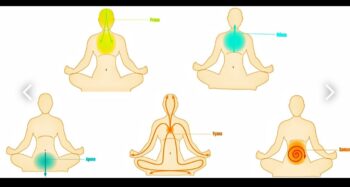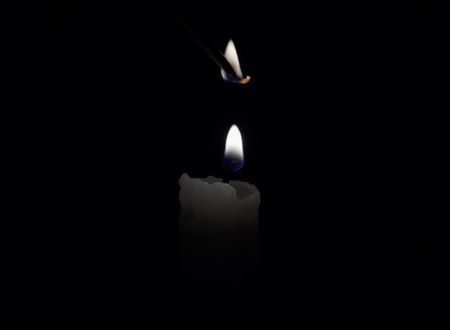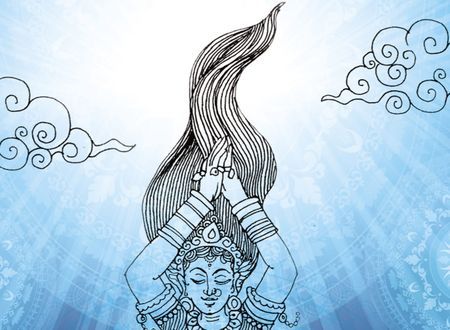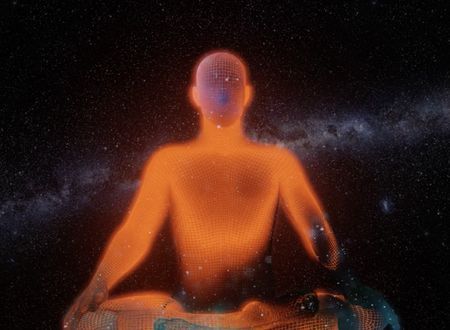Subtle body/सूक्ष्म शरीर
You know that the subtle body has seventeen components;
5 organs of perception/ज्ञानेन्द्रिय,
5 organs of action/कर्मेन्द्रिय
5 vital air/प्राण
mind, and intellect. (Memory/Chitta and Ahankar/ego , these are also included in subtle body along with mind &intellect)
Remember, these organs of action and perception in the subtle body are the subtle faculties/ capacity or power located in its respective physical/gross appendages. e.g. Gross eyes cannot see itself but the faculty of vision (part of a subtle body, located in the eyes) is necessary for the vision through the eyes. hands may be there(gross), but if faculty of grasping ( part of subtle body, located in hands) is gone, one cannot grasp.

Five organs of perception/ ज्ञानेन्द्रिय- 1. Ability to hear in the ears. 2. Ability to feel in the skin. 3. Ability to see in the eyes. 4. Ability to taste in the tongue. 5. Ability to smell in the nose. ( Ears, eyes,skin,tongue,nose are the parts of gross body but faculty/ability of hearing,seeing,etc is the part of subtle body. )

Five organs of action/ कर्मेन्द्रिय 1. Capacity to speak located in tongue, voice box- for speech. 2. Power/ Capacity to grasp in hands- grasping and for different types of work 3. Power of Locomotion in Legs- To walk 4. Ability to excrete in anus- elimination of waste/excretion 5. Capacity to procreate in genitals- procreation. (Tongue, hands, legs,anus, genitals are the parts of gross body but the capacity to speak, grasp,etc is the part of subtle body)
We have learnt the ten components i.e. five karmendriyas and five jnanendriyas. Next five components are the five pranas which are physiological functions and without which we cannot live. The mind and intellect are 16th and 17th components. We will know about it in it’s respective sheath study.
so let’s learn– Characteristics of the Subtle body/ सूक्ष्म शरीर, (Just like we have seen the characteristics of the gross body.)
A. Subtle body is made up of five great elements in their nascent/subtle form( ungrossified). Just like gross body, subtle body is made up of five elements/पंचमहाभूत but from its subtle form before the process of grossification. Five elements( space,air, fire, water, earth) in subtle form are called ‘ tanmatras’. Entire subtle world is made up of these subtle elements. This body is called subtle/सूक्ष्म because we cannot perceive it, I.e. the prana, karmendriyas, jnanendriyas, mind,intellect. If this subtle body leaves the gross body, we say that the person is dead. Stones, rocks are nonliving as they don’t have subtle body. They are just the gross matter. Made up of gross elements.
B. It pervads the gross body. All the systems of the gross body functions because of the power of subtle body. The five vital air/ पंचप्राणवायु of the subtle body provides the vitality to every gross body parts. Karmendriyas and jnanendriyas gives the power to gross body parts to function. This is because of its pervasiveness. ( The cell is the unite of our gross body. The functioning of Cell is backed up by the energy/prana. It cannot be seen but proved by the vitality of the cell.)
C. Subtle body is born of results of past actions. As already mentioned, the human birth is the result of the good actions of the past. In the human body alone we have chances to create merits or demerits through our actions. As our actions differ, subtle bodies are different. ( It is said that 50-50% of merits and demerits that means 50% good and 50% bad karma /पुण्य-पाप gives rise to the human birth. Anything more or less will make one land up in higher or lower species birth. lower are animal, plant, mineral species birth and higher are devata, gandharva etc births) That’s why, we have to use this birth to create merits by good intentions. Mind and intellect to be used for good thoughts and ideas so that actions will be accordingly)
D. Subtle body is the instrument of experiences. The wrist watch you wear is not aware of whether it is worn or thrown, because it has no Subtle body. ( It is just a matter/ जड) but you are aware that you wore it through the functioning of your Subtle body. The gross body doesn’t feel joyous when praised, it is the mind who recognizes and feel joyous.
You have eaten the sweets through mouth. Tongue, teeth and pharyngial muscles helped to chew and deglute it. But did they enjoy it?? No…it’s mind who enjoyed and became joyous. Dead body doesn’t feel the pain if pricked, as Subtle body leaves it.
E. Subtle body is also subject to change. Components of subtle body( jnanendriyas, karmendriyas, pranas,mind and intellect)can improve or weaken. E.g eyes / vision becomes poor, locomotion slows, intellect gets sharper or dull.
( Gross body exists for only one birth, whereas the subtle body continues into future lives as well. Karma from past lives is carried forward because of the continuity of the subtle body.)
This was all about the subtle body in general. Now we will see the three components of this subtle body
1. Vital air sheath/प्राणमयकोश
2. Mental sheath/मनोमयकोश
3. Intellectual sheath/विज्ञानमयकोश
1. Vital air sheath/ प्राणमयकोश_ The five vital air/ pranas and the five organs of action/कर्मेन्द्रिय together form the vital air sheath/ प्राणमयकोश. The pranas are the physiological functions without which gross body cannot function.
Five Pranas are—- 1. Prana/प्राण 2. Apana/अपान 3.Vyana/व्यान 4. Udana/उदान 5. Samana/ समान
Functions/ role of each Prana are–
1. Prana- Breathing ( inhalation and exhalation) is governed by prana.
2. Apana- Rejection of all waste from the body is taken care of by apana. ( urination, defecation, sweating, etc). Toxins accumulate causing various disease if apana is weak.
3. Vyana- The circulation of blood and nourishment to every cell of the body is the work of Vyana.
4. Udana- All reactions or reverse processes are done by udana. e.g vomiting, burping, etc. Udan/ उदान is responsible for continuous and emerging thoughts of the mind. It supplies the necessary power to the subtle body to leave the gross body at death.
5. Samana- The food eaten is digested and assimilated by samana.

These pranas function naturally and involuntarily, silently from birth to death even while we sleep. when the pranas function efficiently, the body remains healthy, the sense organs are keen, the organs of action strong and the mind alert. When they malfunction, the body becomes ill, weak, and diseased. If they stop functioning, we die.
You have already learnt the five organs of action. They are the capacity to speak ( located in the vocal chords and tongue), to grasp things(located in the hands), of locomotion ( located in the legs), to excrete ( located in the anus) and to procreate ( located in the genitals) The body responds to external stimuli through them. They are prompted by the mind into action.
E.g. you are standing near the gas stove to boil the milk in the pot. Eyes are seeing this with the help of faculty of vision. Mind is getting stimulus. When milk comes up, mind prompts the karmendriyas/ ability to grasp located in the hands to switch off the gas. Absence/ loss of any one factor among these( eyes/vision, mind, hands/ grasping) will spoil the milk…( you will not turn off the gas and milk will spill over..) Got it??
Thus pranamaykosha/ vital air sheath is responsible for all the vital events occurring in the body with the functioning of five pranas and five karmendriyas. They develop from birth, childhood, attain their full strength and then weaken with age. Weakening or loss of any member of this kosh gives rise to respective defect or disorder.
We will learn the mental sheath/ मनोमयकोश and intellectual sheath/ विज्ञानमयकोश in next part. So stay connected. …









Comments & Discussion
9 COMMENTS
Please login to read members' comments and participate in the discussion.